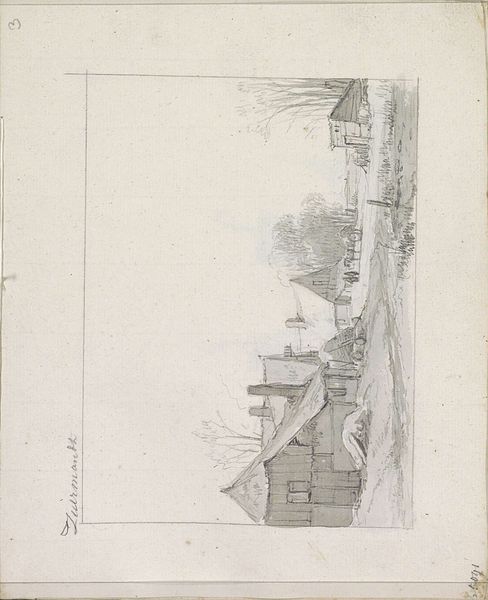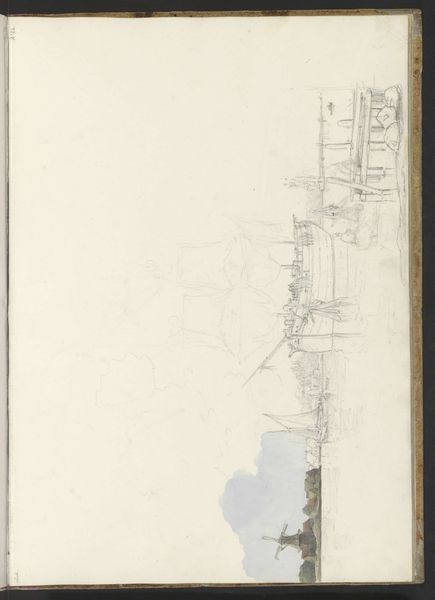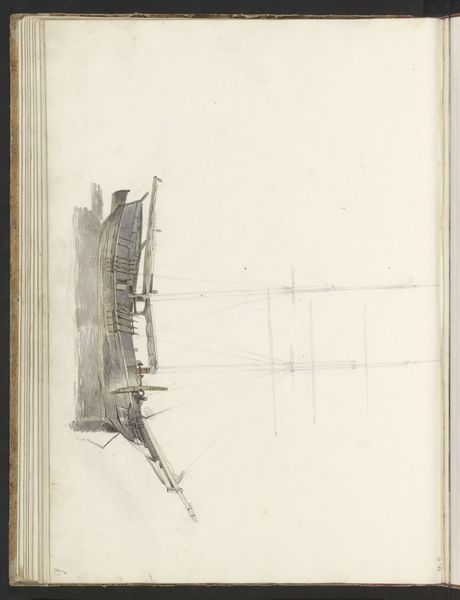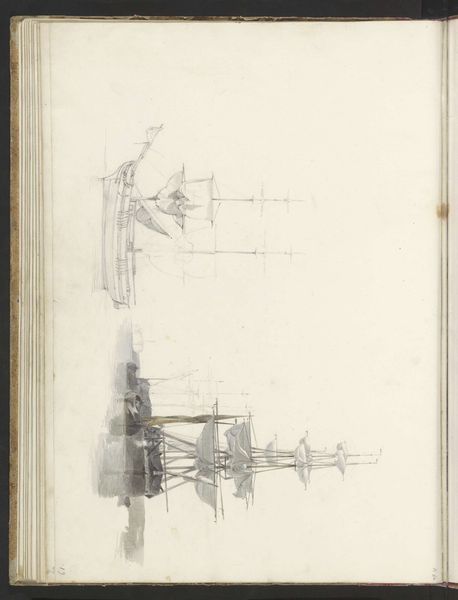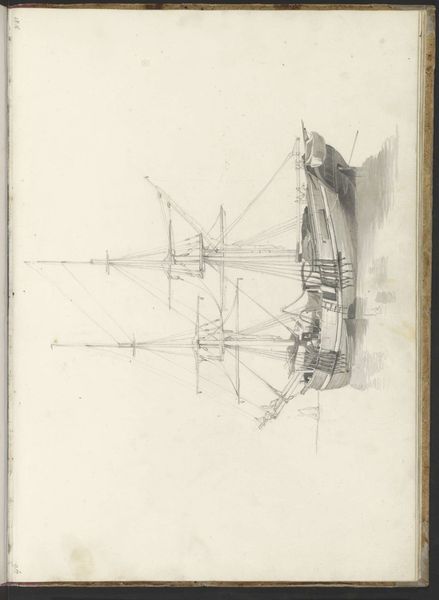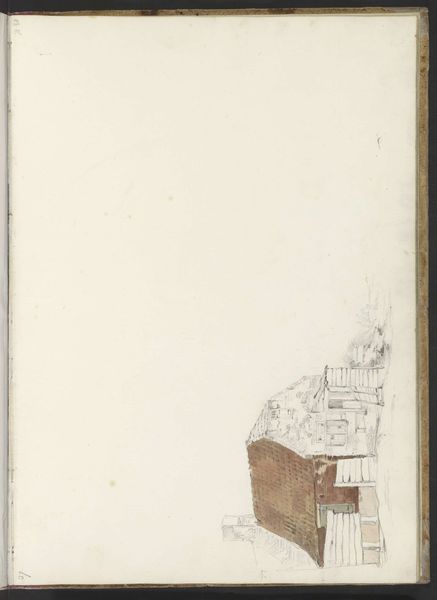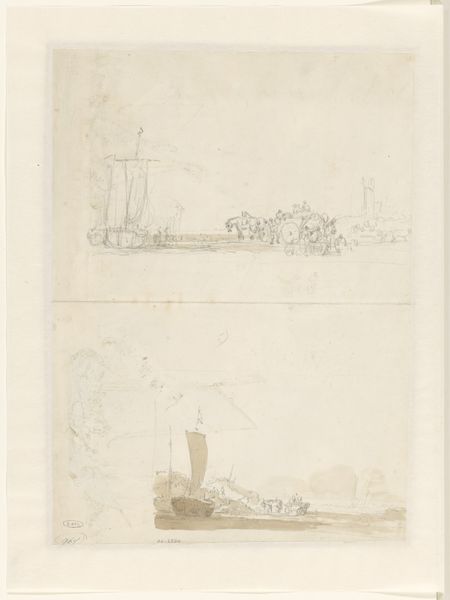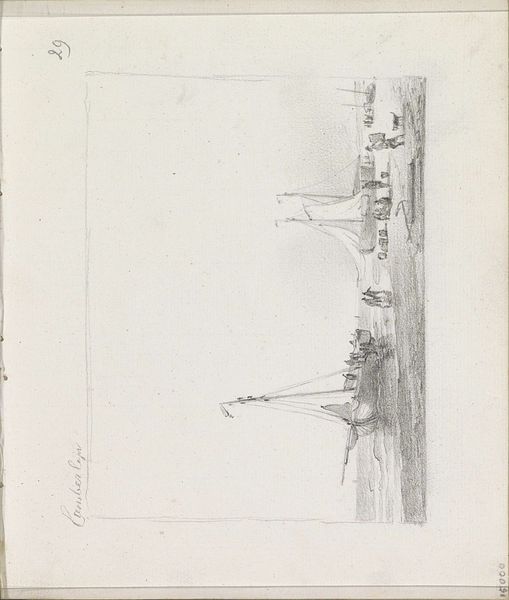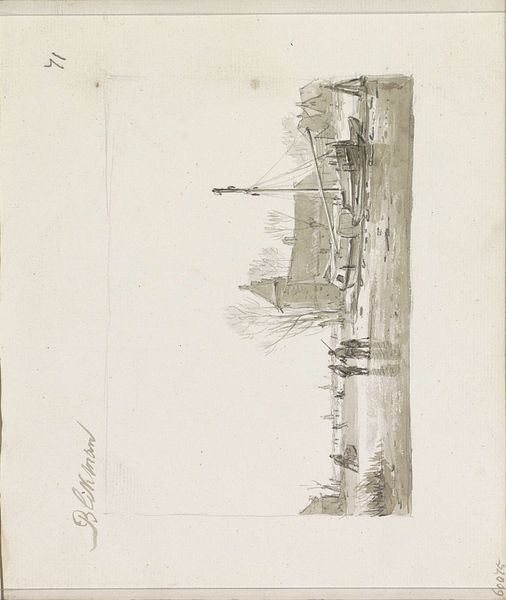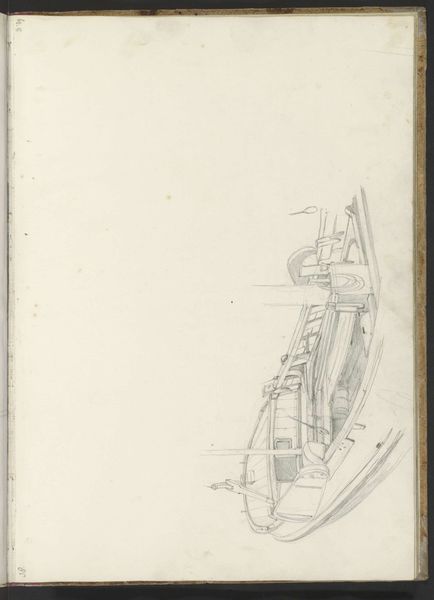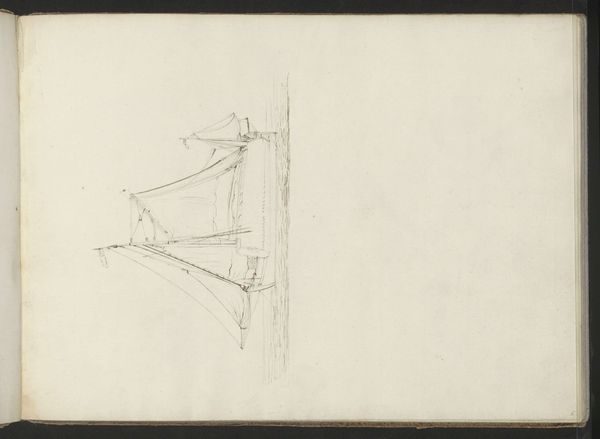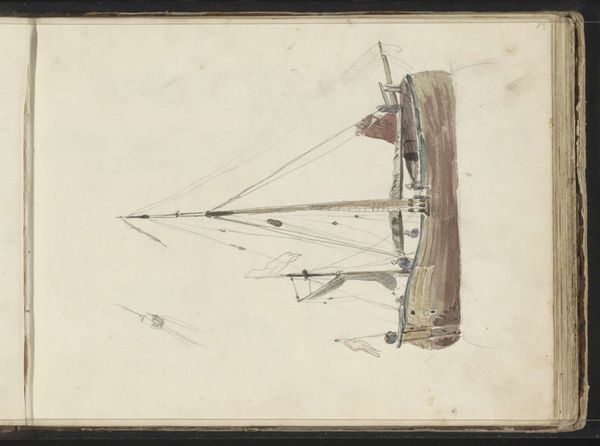
drawing, watercolor
#
drawing
#
landscape
#
watercolor
#
coloured pencil
#
romanticism
Copyright: Rijks Museum: Open Domain
Curator: This watercolor drawing is titled "Zeilschepen voor anker bij een oever," or "Sailing Ships Anchored by a Shore," created by Johannes Christiaan Schotel between 1797 and 1838. It's currently housed at the Rijksmuseum. Editor: There's a certain stillness that this piece evokes. The soft watercolors lend a muted quality, and the subtle detail makes me think of long days spent waiting for tides to turn. I'm immediately drawn to the almost tactile representation of the weathered wood and ropes on the boats. Curator: That stillness, I think, speaks to a specific moment in Dutch history. Schotel specialized in maritime scenes, which, beyond their aesthetic appeal, also reflect the importance of seafaring to the Dutch economy and national identity at the time. Editor: Absolutely. And if we think about the materiality of seafaring—the timber, the canvas, the rope—all speak to specific forms of labor and trade that connected the Netherlands to global networks of resource extraction. You see those raw materials represented right there. Curator: Precisely. And consider the intended audience. These weren't necessarily paintings for the elite; prints and drawings like this one were more accessible, shaping a collective visual understanding and idealization of Dutch maritime power among a wider public. They shaped popular nationalism. Editor: It makes you wonder about the lived experiences of the people involved. The watercolor itself-- what was available and how that changed the artwork that could be produced, is really compelling. Were these vessels engaged in trade, fishing, or something else entirely? Curator: It is also telling that, though classified as Romanticism, Schotel’s depictions remain quite realistic. Romanticism often involved dramatic emotional content, but Schotel focuses on capturing the tangible aspects of these maritime settings, still within a cultural romanticizing of it. Editor: It feels like we get a sense of the labor involved. Not glorifying it, perhaps, but acknowledging it through the material depiction of ships. Curator: A fitting testament, perhaps, to the skilled craftsmanship involved in maintaining that economic lifeline for the Dutch. Editor: And a thoughtful reminder that what we see hanging here today, the art in its present state, only hints at its rich, complex, and multifaceted history.
Comments
No comments
Be the first to comment and join the conversation on the ultimate creative platform.
